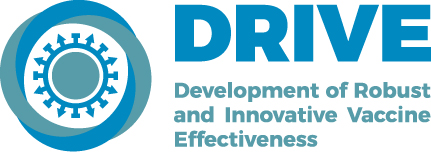The new regulatory requirements for vaccine manufacturers in the EU require a new approach to evaluate the effectiveness of seasonal influenza vaccines. The aim of these requirements is to provide a better understanding of how effective the influenza vaccines used in Europe are.
EMA has introduced a new requirement for brand-specific influenza vaccine effectiveness results from the vaccine manufacturers. EMA encourages the industry to liaise with public health authorities who have experience in influenza vaccine effectiveness studies and who have implemented a functioning infrastructure to conduct multicentre studies.
There is a need for robust Influenza Vaccine Effectiveness data. See how #DRIVEflu works to match the need: https://t.co/aGYfdddp0x #H2020 @IMI_JU @EFPIA @EU_H2020 pic.twitter.com/kKAd7H3oZ8
— DRIVE Project (@drive_eu) September 17, 2018
The DRIVE research project appears to respond to this regulatory and public health need. “DRIVE is developing a governance model for transparent, scientifically robust studies in public-private partnerships”, states the coordinator of the project, Head of Faculty of FISABIO Vaccine Research, Javier Díez-Domingo.
DRIVE has completed a pilot study to test the platform and the feedback at the Annual Forum will help strengthen our approach and we work towards the ultimate goal of generating robust brand-specific data.
Estimating and communicating influenza vaccines’ impact comes with unique challenges
Analysing the effectiveness of multiple influenza vaccines is not an easy task. Vaccine response differs with population characteristics including age and underlying medical conditions. Also, different strains of the influenza virus may circulate in different times of the season and in different regions of Europe. The vaccine recommendations, coverage and brands used also differ between EU countries.
Furthermore, differences in research methods and the settings where the data is collected means that pooling the data is methodologically challenging, states Cedric Mahe, the Associate VP and Head, Vaccine Epidemiology and Modeling of Sanofi Pasteur. For example, in Finland the data is gathered straight from the national registers covering both hospitals and general practices. In Valencia, the data is collected using a different methodology called the test-negative design. This means that hospitalized patients with respiratory symptoms are tested for influenza, and vaccination status is compared between those who test positive and those who test negative.
Harmonized study protocols and data collection will give better tools to assess the protection of populations
“DRIVE can play an important role in defining a system within the EU that can generate robust vaccine effectiveness data that would inform public health and regulators at the same time”, told Marco Cavaleri, Head of Anti-infectives and Vaccines at EMA.
“The strength of the system would be in collected harmonized data across different regions in the EU and with different vaccine brands that can be merged to give us a precise estimate of influenza vaccine effectiveness over the years”, Cavaleri added.
Feedback from the stakeholders will help to tailor the project better for the end users
Some of the most valuable input extracted from the consortium’s Annual Forum came from the active and constructive conversations with the public health and regulatory professionals – who will be the end users of the project’s results.
The communications workshop mapped how information must be adapted from one stakeholder group to another. For example, regulatory organizations such as EMA need the brand-specific information and scientists may want to understand the methodology behind the results. Other stakeholders such as clinicians and political decision-makers may appreciate more concrete and accessible information such as the cost-effectiveness of influenza vaccination.
Another open workshop, hosted by DRIVE right before the Annual Forum, looked into current knowledge gaps and future research needs regarding influenza vaccine effectiveness. The workshop identified several areas where new information could benefit public health: many of these are best addressed through European cooperation.
Arrancamos reunión anual proyecto @drive_eu. @javierdiezd presenta el proyecto a nuevos socios y el gran reto de los estudios piloto para evaluar la efectividad de la vacuna de la gripe #influenza pic.twitter.com/l9oEVTCmsk
— Mónica VázquezMoreno (@MoniVazquezMor) 16. syyskuuta 2018
DRIVE: Development of Robust and Innovative Vaccine Effectiveness
DRIVE is an IMI-funded public-private partnership established in 2017 to build a sustainable platform for generating robust brand-specific influenza effectiveness data across Europe each year, as part of new EMA requirements. DRIVE calls for additional research partners to contribute data and expertise, enabling the project to continue to improve the study platform and to work towards its long-term goals.
Read more
The DRIVE 2018 Annual Forum presentations at the Slideshare
Follow DRIVE on its official social media accounts Twitter and LinkedIn and check its hashtag #DRIVEflu.
